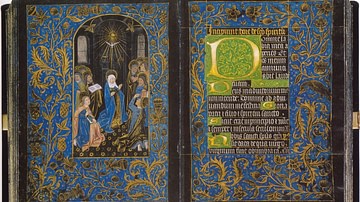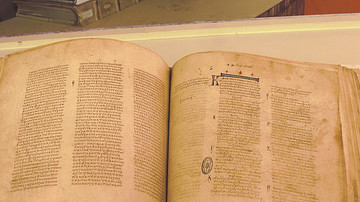Review

| Rating: | |
|---|---|
| Title: | Touching Parchment: Volume 1: Officials and Their Books |
| Author: | Kathryn M Rudy |
| Audience: | University |
| Difficulty: | Medium |
| Publisher: | Open Book Publishers |
| Published: | 2023 |
| Pages: | 274 |
"Touching Parchment" culminates 25 years of research on European medieval manuscripts (ca. 1100–1500). By scouring archives and taking more than 900 photographs, Kathryn Rudy documents the visible damage of neglected and undisplayed copies, interpreting the marks of wear that remain. She suggests these signs are not merely damage but are readable evidence of the deep emotional connections and ritualistic gestures people used to engage with the written word.
Manuscript historian Kathryn Rudy from the University of St. Andrews in Scotland is known for taking a forensic approach to studying medieval manuscripts. Renowned for her Dirty Books Project, she introduced a new historical approach by using the densitometer to measure grime and manipulation.
In Touching Parchment, the first of two open-access volumes, Rudy presents the culmination of 25 years of research across European archives. Collecting more than 900 photographs of European medieval manuscripts (ca. 1100–1500)—many of which are reproduced in this book—she argues that these works are often left unexamined since damaged manuscripts are typically not chosen for display. Yet, she asserts that the damage on these manuscripts represents “interpretable marks of wear” and each mark, whether intentionally put there or not, has a story to tell (4). These signs of wear reveal the deep emotional connections people formed with manuscripts, shedding light on the ritualistic gestures they used to engage with the written word.
In Part I, the first chapter serves as an introduction outlining the structure, method, and approach along with how the book relates to its relevant historiography. In “Ways of Touching Manuscripts,” Rudy breaks down her analysis of manuscript damage into the broad categories of “inadvertent wear” and “targeted wear,” each of which has various subcategories (29). The discussion of the targeted wear had much more detail. She talked about depositing wax as place markers and scratching them off, kissing texts, touching images, and sewing curtains to pages among other explanations for visible damage to manuscripts.
Part II, titled “Books and Authority,” begins with Rudy exploring the broader trends of oath-swearing, tracing its evolution from the "Peace of God" movement in 975 to roughly the 14th century—a period spanning four centuries during which the practice of swearing on Gospels and missals gradually replaced using relics. A discussion of coronations and other acts of oath-taking was interestingly used to explain manuscript wear. Chapter Four relates how the history of kissing “images, words, and decoration within books” left physical evidence of wear (85). A history of missals that focused on liturgical practices highlights a shift in the 12th century, when worship became more theatrical, incorporating an increasing number of prescribed religious gestures—many of which are now evident in manuscripts. The next chapter “Swearing: From Gospels to Legal Manuscripts” emphasizes the late medieval expansion of oath-swearing from something concerning only emperors and kings to a practice adopted by the literate public. Legal manuscripts copied images from religious texts and adopted many of the rituals that were once exclusive to the religious sphere. Touching these images in oath-taking ceremonies left smears and other signs of wear that were painstakingly photographed and analyzed. The final chapter reviews the wear on books used in liturgical singing and memorializing the dead. Given the purpose of these manuscripts and the frequent use of ritual liturgical gestures, these books survived with much greater wear compared to other medieval manuscripts.
Overall, many of the chapters could function as stand-alone supplementary texts for a variety of post-secondary courses, spanning disciplines from art to history. Secondary teachers might make use of the hundreds of images to illustrate how people interact with both art and the written word. Its open access ensures that this incredible book can reach and benefit a wide audience.
About the Reviewer
Cite This Work
APA Style
Polemikos, J. (2025, May 12). Touching Parchment: Volume 1: Officials and Their Books. World History Encyclopedia. Retrieved from https://www.worldhistory.org/review/520/touching-parchment-volume-1-officials-and-their-bo/
Chicago Style
Polemikos, John. "Touching Parchment: Volume 1: Officials and Their Books." World History Encyclopedia. Last modified May 12, 2025. https://www.worldhistory.org/review/520/touching-parchment-volume-1-officials-and-their-bo/.
MLA Style
Polemikos, John. "Touching Parchment: Volume 1: Officials and Their Books." World History Encyclopedia. World History Encyclopedia, 12 May 2025, https://www.worldhistory.org/review/520/touching-parchment-volume-1-officials-and-their-bo/. Web. 25 Jun 2025.




